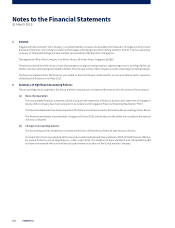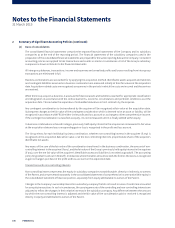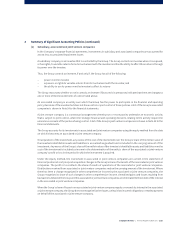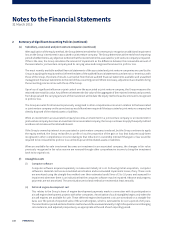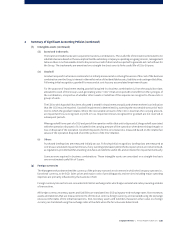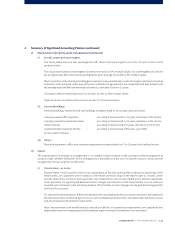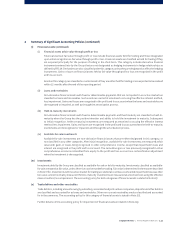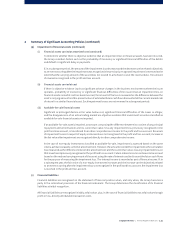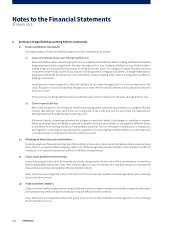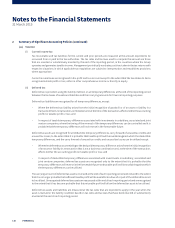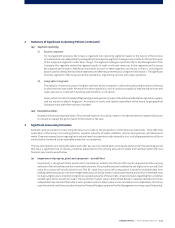Singapore Airlines 2015 Annual Report Download - page 115
Download and view the complete annual report
Please find page 115 of the 2015 Singapore Airlines annual report below. You can navigate through the pages in the report by either clicking on the pages listed below, or by using the keyword search tool below to find specific information within the annual report.
2 Summary of Significant Accounting Policies (continued)
(l) Financial assets (continued)
(i) Financial assets at fair value through profit or loss
Financial assets at fair value through profit or loss include financial assets held for trading and those designated
upon initial recognition as fair value through profit or loss. Financial assets are classified as held for trading if they
are acquired principally for the purpose of selling in the short-term. This category includes derivative financial
instruments entered into by the Group that are not designated as hedging instruments in hedge relationships as
defined by FRS 39. Derivatives are also classified under this category unless they are designated as eective hedging
instruments. Gains or losses on financial assets held at fair value through profit or loss are recognised in the profit
and loss account.
Assets in this category are classified as current assets if they are either held for trading or are expected to be realised
within 12 months aer the end of the reporting period.
(ii) Loans and receivables
Non-derivative financial assets with fixed or determinable payments that are not quoted in an active market are
classified as loans and receivables. Such assets are carried at amortised cost using the eective interest method,
less impairment. Gains and losses are recognised in the profit and loss account when the loans and receivables are
derecognised or impaired, as well as through the amortisation process.
(iii) Held-to-maturity investments
Non-derivative financial assets with fixed or determinable payments and fixed maturity are classified as held-to-
maturity when the Group has the positive intention and ability to hold the investment to maturity. Subsequent
to initial recognition, held-to-maturity investments are measured at amortised cost using the eective interest
method, less impairment. Gains and losses are recognised in the profit and loss account when the held-to-maturity
investments are derecognised or impaired, and through the amortisation process.
(iv) Available-for-sale investments
Available-for-sale investments are non-derivative financial assets that are either designated in this category, or
not classified in any other categories. Aer initial recognition, available-for-sale investments are measured at fair
value with gains or losses being recognised in other comprehensive income, except that impairment losses and
interest are recognised in the profit and loss account. The cumulative gain or loss previously recognised in other
comprehensive income is reclassified from equity to the profit and loss account as a reclassification adjustment
when the investment is derecognised.
(m) Investments
Investments held by the Group are classified as available-for-sale or held-to-maturity. Investments classified as available-
for-sale are stated at fair value, unless there is no active market for trading. Fair value is determined in the manner described
in Note 37(b). Investments with no active market for trading are stated at cost less accumulated impairment losses as their
fair value cannot be reliably measured. Held-to-maturity investments are measured at amortised cost using the eective
interest method, less impairment. The accounting policy for both categories of financial assets is stated in Note 2(l).
(n) Trade debtors and other receivables
Trade debtors, including amounts owing by subsidiary, associated and joint venture companies, deposits and other debtors
are classified and accounted for as loans and receivables. Other non-current receivables are also classified and accounted
for in the same way. The accounting policy for this category of financial assets is stated in Note 2(l).
Further details on the accounting policy for impairment of financial assets are stated in Note 2(q).
Singapore Airlines | Annual Report FY2014/15 |113



